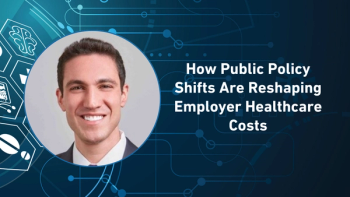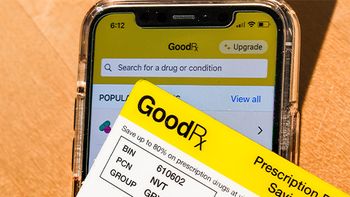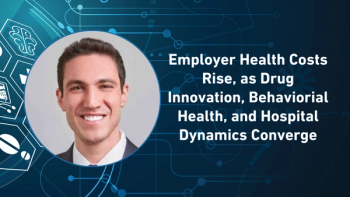
- Pharmaceutical Commerce - September/October 2016
Using near real-time medical claims to target physicians with newly diagnosed patients
Traditionally, the industry standard for using medical claims to target physicians is to look at the data on a quarterly or annual basis. In many instances this will suffice. Today, however, the climate is fierce for life sciences companies, with highly aggressive competition in volatile environments. Thus, their success often is found in being in the right place at the right time to influence a treatment decision. In these instances, medical claims data can make a difference.
This data, while rich in information, can be outdated and inadequate in driving timely business decision-making, particularly when compared to prescription claims data. This latency made it challenging to use medical claims to support timely business decision-making. However, as healthcare technology evolves, medical claims data is becoming more rapidly available. This shift has opened a door to new and innovative ways of using daily and weekly claims feeds to derive key insights and enable more agile sales and marketing teams.
Recently, LexisNexis Health Care conducted a pilot study with a pharma client to test the value of a recently introduced service, MarketView Early Alerts. This service makes use of medical claims data that are received in near real-time (days or weeks); the question to address is, can access to this data make a difference in prescribing activity? Significantly, the pilot study demonstrated a two- to threefold rise in prescribing, compared to a control group of physicians who were not included in the MarketView Early Alerts database.
Do you have a need for speed?Before examining the details of a near real-time medical-claims database, it is worth asking, is the targeted therapy right for this type of analysis? There are several key factors to consider when determining if you need real-time or near real-time data to improve how your sales force prioritizes its HCP targets.
- Reduce latency. If your organization is relying on data delivered quarterly, it may be (at best) three months old by the time your sales force receives it. Ask yourself if that latency is impacting your competitive advantage.
- Flexible sales force. Your sales force must be flexible enough to act on the information. The benefit of receiving near real-time intelligence is that your sales force has the ability to act immediately. Can your sales force quickly adapt and reprioritize to follow these new leads?
- Time. To adequately use the approach outlined in the pilot project, there must be a delay between the patient’s initial diagnosis and treatment, so that the sales force has the opportunity to use the information to target the physician and influence his/her treatment recommendations. For example, we see many organizations with a need for it in the oncology space, where there is often a period of time between diagnosis and treatment.
- Value. Ultimately, it is important to assess where there is a value to your organization in using this approach. In the case of the pilot program, the neurological disorder was rare, and the treatment was expensive. There was a big return to be gained by the company for each new patient using the therapy.
The client pharma company was focused on treating a rare neurological disorder with an injectable product. This particular marketplace is made up of a clearly defined set of products–everyone in the market knows what those products are and the players who sell them. The treatment for this disorder is relatively costly, so there is a significant return on investment to be gained by the company each time a new patient begins using its product. The customer’s key challenge was identifying new physicians who are diagnosing these patients prior to treatment initiation, especially among physicians treating a lower volume of patients in total.
The goals for the 12-week pilot program were to:
- Identify health care providers (HCPs) with newly diagnosed patients
- Identify new HCPs with new patients
- Reach HCPs with new patients through the sales force prior to the physicians recommending a therapy decision.
The pilot program identified physicians diagnosing patients with the rare neurological disorder and sent weekly files of new patient alerts to the customer for dissemination to its sales force.
After the pilot, the customer’s sales activity was provided to LexisNexis Health Care to analyze the results, which identified categories of physicians based on patterns of sales behavior, including 1) existing call activity prior to the pilot and 2) sales activity within the recommended window after Early Alert was sent. LexisNexis used medical claims data to identify changes in diagnosis and treating patterns among pilot physicians from a baseline period (12 weeks prior to the pilot) to a measurement period (12 weeks immediately following the end of the pilot).
The analysis revealed the following:
- Early Alerts identified new HCP targets not previously identified by the customer.
- The sales force was able to positively impact physician brand choice.
- Among called HCPs, a continued increase in patient diagnosis was seen after the pilot.
- The sales force was most impactful when calling on an alerted HCP with a previous history of sales activity.
- Continued effects of the program were seen in claims activity months beyond the initial evaluation period.
In fact, twelve weeks after the pilot, the customer had 36% of the market with HCPs in instances where they had a sales call history and used Early Alerts compared with only a 14% market share with HCPs who did not have any Early Alert data reported, meaning we did not identify them as having a new patient during the pilot. The results were similar after 24 weeks: 40% of the market share for HCPs in which they had a sales call history and used the Early Alerts solution compared with only 14% of market share with HCPs where they had a sales call history, but did not have any Early Alert data reported.
Given the limited resources most life sciences and pharmaceutical companies have today, being able to increase the sales and marketing effectiveness of your brand is a priority. Particularly for high-value, specialty drugs for rare-disease conditions, each patient represents a significant component of the overall ROI of the drug’s commercialization. Leveraging near real-time claims data enables precision timing and delivers a powerful competitive advantage by speeding up the process to educate and influence physicians before a treatment decision has been made.
ABOUT THE AUTHOR
Emily Mortimer is manager, claims analytics and statistical modeling, LexisNexis Health Care, where she works directly with customers in the Life Sciences and healthcare market verticals. Previously, Mortimer was a senior data analyst with Health Market Science, acquired by LexisNexis in 2015. She holds a master’s in Public Health degree in Epidemiology from Drexel University School of Public Health.
Save
Save
Save
Save
Save
Save
Save
Save
Articles in this issue
over 9 years ago
Cold Chain Global Forum is coming upover 9 years ago
5 CAPA best practices for clinical researchover 9 years ago
Integrating patient training into product launchesover 9 years ago
Value frameworks are here: What to do about them?over 9 years ago
Orphan drug commercialization is maturingover 9 years ago
Advancing the biopharma cold chainover 9 years ago
A conversation with Gerry Gleeson, Walgreens Specialty Pharmacyover 9 years ago
Since 1841: The Story of an Enduring Family Businessover 9 years ago
Specialty drug market access reality checkNewsletter
Stay ahead in the life sciences industry with Pharmaceutical Commerce, the latest news, trends, and strategies in drug distribution, commercialization, and market access.




